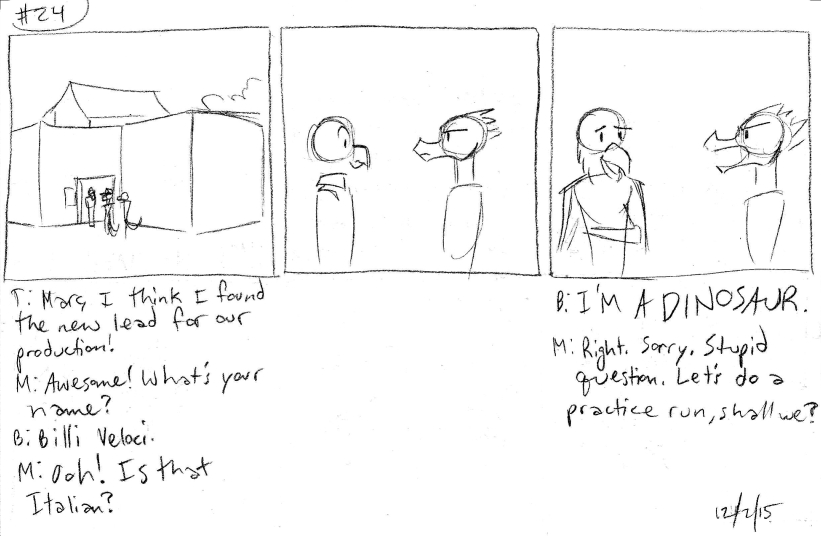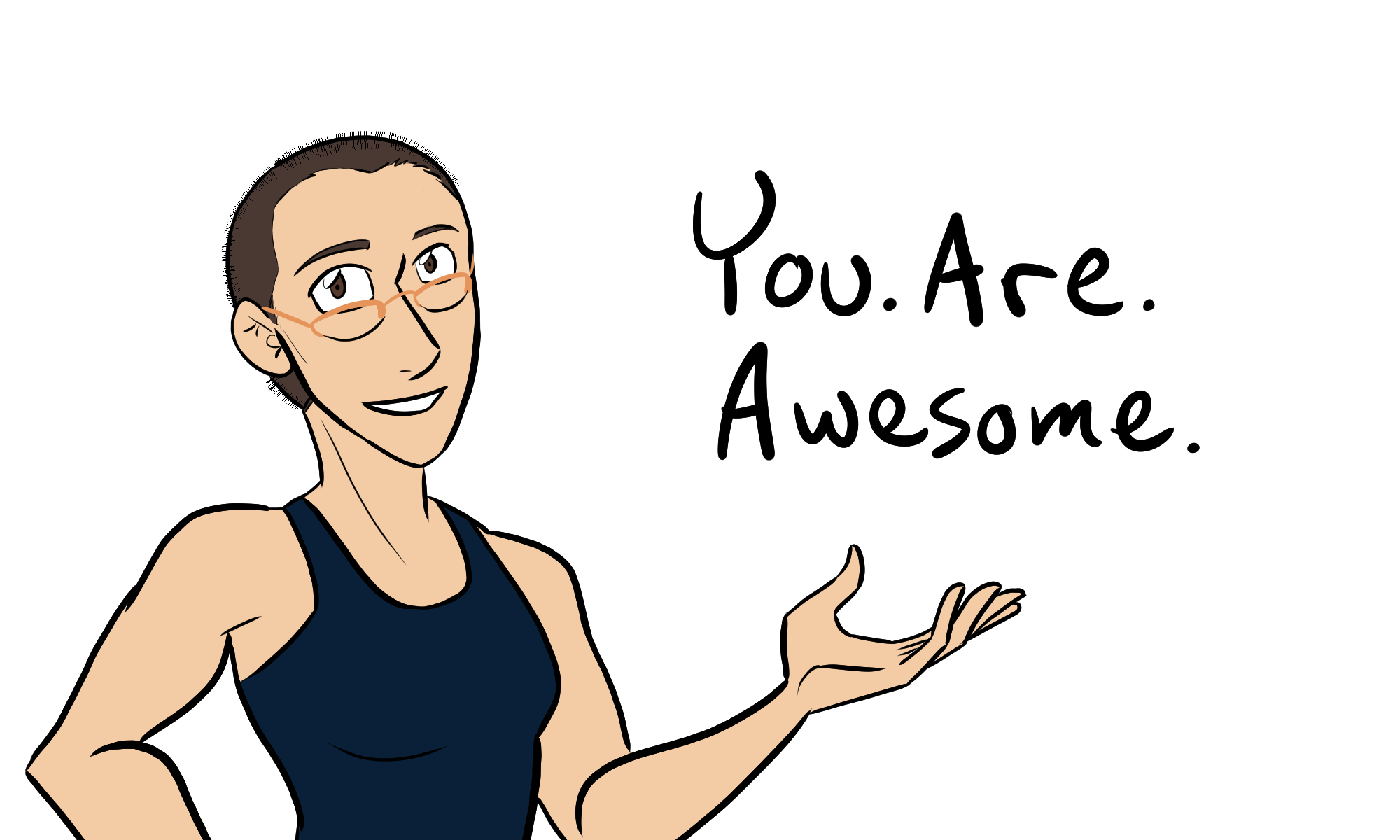
One of the backers of The Legend of Jamie Roberts, Chapter 1 had asked to see some scripts for the comic as part of the PDF reward. This question made me realize that my scripting process is not like how I’ve seen other comics makers work on their scripts.
Why?
Well, most comic makers I know only WRITE the script. Usually in a movie-script-like format, in which it goes like this:
Panel 3:
Billy stares at Marc Macaw in disbelief. Marc Macaw realizes his gaff and smiles a bit sheepish.
BILLY: …I’M A DINOSAUR.
MARC: Right. Sorry. Stupid question. Let’s do a practice run, shall we?
Truth be told, this format is how I write my rough draft of my comic scripts.
The only comic I’ve made that this didn’t apply to was Johnson & Sir. That one, I wrote out the story page by page. It’s not a method I would recommend to anyone unless you’re writing gag comics.
My other comics, from Thoughtful Dinosaur to The Case of the Wendigo to The Legend of Jamie Roberts, have been scripted in this pattern:
- Rough Draft: type it up in my version of a comic script format.
- Second Draft: Read the rough draft and thumbnail the pages. I make adjustments as I go.
Sometimes the second draft is a re-typing of the rough draft. If that’s the case (like with The Case of the Wendigo), the thumbnailing stages will actually be my Third or even Fourth draft.
What are thumbnails?
This is a term I stole from animation – it means to VERY roughly sketch out how a page looks. I’m talking stick figures and bubbles. Thumbnails are in a sketchbook and are meant to just show how the page would look in a rough layout.
I find thumbnailing the pages to be helpful, even if I wait several months between the rough draft and the thumbnail draft (or, Thumb Draft, if you will).
When I work on the Thumb draft, I can sketch out how the page looks according to the script. And if I don’t like how many words a character says, or I don’t like how certain scenes pan out, I can draw a different result.
As a visual person, it helps me to SEE how a scene pans out, rather than just read about it.
So if you’re having an issue in your comic script, try drawing it out in rough stick fugure-ish form. It may help you visualize the scene easier.
That’s all for now. Thank you for reading!
You. Are. Awesome.
